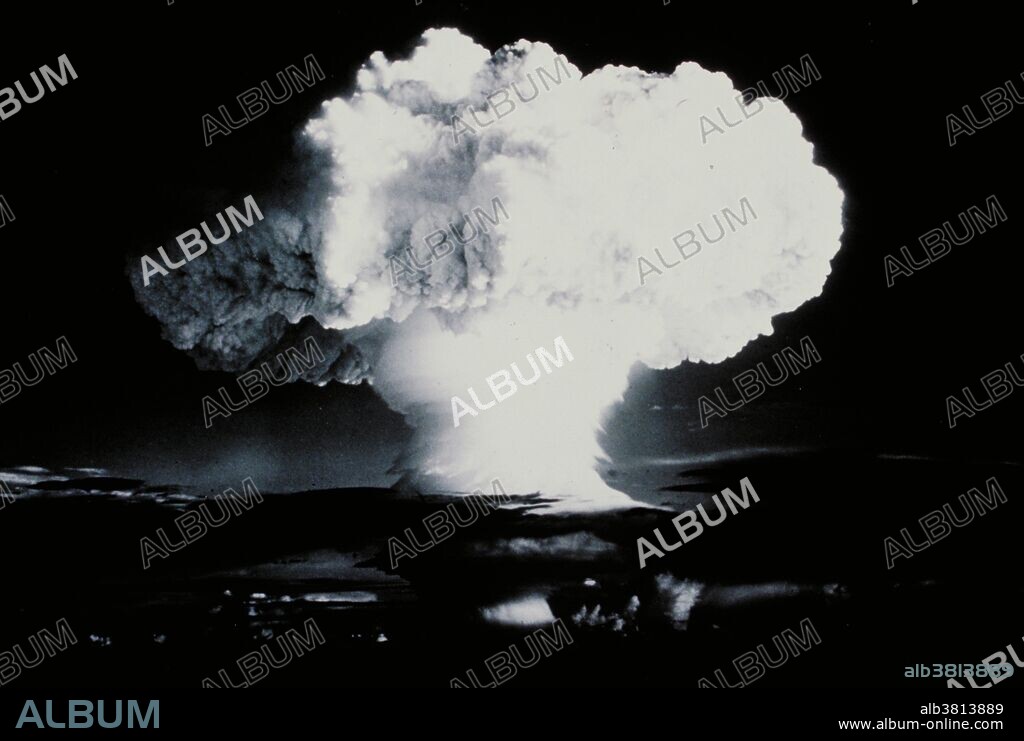alb3813889
Operation Ivy MIKE, 1952

|
Ajouter à une autre Lightbox |
|
Ajouter à une autre Lightbox |



Avez-vous déjà un compte? S'identifier
Vous n'avez pas de compte ? S'inscrire
Acheter cette image.
Sélectionnez l'usage:

Titre:
Operation Ivy MIKE, 1952
Légende:
Voir la traduction automatique
Operation Ivy was the eighth series of American nuclear tests. Its purpose was to help upgrade the U.S. arsenal of nuclear weapons in response to the Soviet nuclear weapons program. The two explosions were staged in late 1952 at Eniwetok Atoll in the Pacific Proving Ground in the Marshall Islands. The first Ivy shot, Mike, was the first successful full-scale test of a multi-megaton thermonuclear weapon (hydrogen bomb) using the Teller-Ulam design. Unlike later thermonuclear weapons, Mike used deuterium as its fusion fuel, maintained as a liquid by an expensive and cumbersome cryogenic system. It was detonated on Elugelab Island on October 31, 1952, yielding 10.4 megatons, almost 500 times the yield of the bomb dropped on Nagasaki. Eight megatons of the yield was from fast fission of the uranium tamper, creating massive amounts of radioactive fallout. The detonation left an underwater crater 6,240 feet wide and 164 feet deep where Elugelab Island had been.
Crédit:
Album / DOE/Science Source
Autorisations:
Taille de l'image:
2853 x 1918 px | 15.7 MB
Taille d'impression:
24.2 x 16.2 cm | 9.5 x 6.4 in (300 dpi)
Mots clés:
ARME • ARMES • BOMBE ATOMIQUE • CÉLÈBRE • CELEBRITE • CHAMPIGNON ATOMIQUE • DETONATION • ÉVÉNEMENT • GUERRE • HYDROGENE • NUCLÉAIRE • OCEAN PACIFIQUE • PACIFIQUE, OCEAN • RECHERCHE • TECHNOLOGIE • XXE SIECLE
 Pinterest
Pinterest Twitter
Twitter Facebook
Facebook Copier le lien
Copier le lien Email
Email
